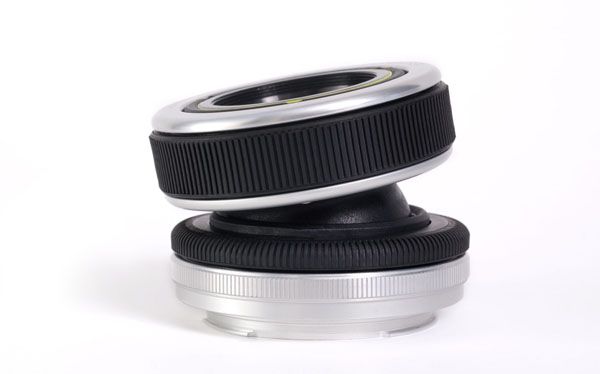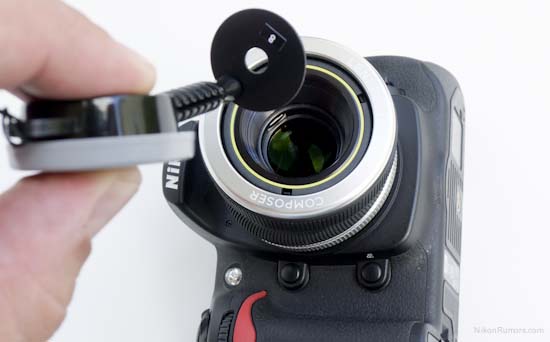Before starting
Hello and welcome to this new tutorial session!
This time I'll explain you my method of work to take photographs by night. I particularly like black and white applied to night photography, I think it's a good way to create cool atmospheres with sharp shadows and textures (special mention for rainy night shoots).
Unfortunately I didn't had much occasion to practice it, the fault to a serious lack of time. But I had enough time to practice the technic, I will introduce mine here.
Things you need
The main stuff you must have for night photography (in addition to your camera, of course) is a tripod. I first bought a cheap one, just to practice and make my opinion about my real need. I'm now looking to buy a better one; I'll probably make an update here when I'll have choose one. By the way, my cheap tripod permitted me to notice that for a frequent use, the quality of the tripod seems to be a thing to care about a lot.
I noticed two things that my first tripod doesn't offer: solidity and stability. Stability in some cases, for example when there is a lot of wind, even with some ballast on it, it was often shaking. And solidity that decreased a lot after less than one year of an infrequent use (resulting on a decrease of stability). Thus, if you're a beginner or if you just don't have a tripod, I suggest you to really choose it with care and to put a minimum of money on it...
Another thing that should help for night shoot is a remote controller for your camera. This will be helpful to trigger your camera without shaking.
There are many sorts of them: wired or infra red for example. Personnaly I bought a Nikon infra red remote controller, it works well if you stay relatively close to your camera...
The objective
I'll try here to explain step by step my way of shooting by night in fully manual mode. Why this mode? Because after several tries I found it was the best way to really get what you expect for this kind of work (even if a auto/semi-auto mode would probably gives you good results, although ...).
First step: what I like to shoot at night
Applied to my passion for black and white, I like to do night shots of specific subjects. Lightened places with strong shadows, monuments or moving lights are what I really enjoy (and always applied to a street ambiance if possible). So the first thing to retain is to try to make yourself happy! The rest depends of you...
Step 2, setting up my gear: The tripod
I'll have a stuff by stuff approach, starting with the tripod...
The very first thing I do once I have chosen the angle of view, is to install my tripod at the correct place. I try to make it as stable as possible. If the tripod has a hook under it, it is possible to hang a bag heavy enough to make the tripod more stable.
It is important to take the time needed to refine the point of view from which the photo will be taken: correct height? Correct angle? For a landscape, is the horizon horizontal? WHat can I see exactly on my viewfinder? Your composition will only be better!
Step 3, setting up my gear: The lens
The first thing I do on my lens when doing night shots with a tripod is to turn off both the AF and the vibration reduction modes (this last one could create ghost vibrations if turned on on a stable tripod).
Then, once I choose my subject and installed my camera on the tripod, I try to make the right focus. The reason I turned of AF and do it manually is simple: AF on dark places isn't always efficient, and... I have time to focus properly, my tripod won't go away (at least, my subject could :).
If I want to focus on a precise spot, I adjust it through the lens with the focus ring.
If I want to focus on a landscape, or if I just can't focus on anything because it's too dark, I use the hypefocal: you obtain it by setting your focus ring on the infinite position. The advantage of this method (used with a small aperture), is to cover a huge sharpness field (just be sure to be at the minimum distance from your subject to avoid unwanted blur).
Here is an example where I used the hyperfocal because it was too dark to see anything for a good manual focus:
Step 4, setting up my gear: the camera
This is not necessarily the most difficult part of the job, but this is the part where there is many little things to think about that we can easily forget. I think it would be more efficient to list all this things on a check list, because this is like a "ritual" you could repeat each time and adapt to situations. So, there is no order, but I like to proceed like this, in manual mode:
- File format: I prefer to shoot in RAW (as usual), to have more flexibility during post-production (PP).
- White balance: On auto mode, RAW files allow to adjust it easily on PP.
- Adjust the sensitivity: I usually put it on 100 ISO. I think you can go up to 400 ISO depending on your material and the exposure time needed to get what you want. I just take care not to be on auto-ISO mode...
- AF: In case I forgot to turn it off on my lens, I turn it off on the camera too, just in case...
- Aperture: At your own, depending on your subject and feeling. Usually a little aperture for landscape, a bigger one for life scenes, people or details...
- Metering: I think I always used it on evaluative mode...
- Shutter speed: This is the last important parameter that I set up. I adjust it live, while looking at the exposure indicator in the viewfinder and try to get it at the right place (e.q. 0EV). This is for the theory, but in fact, depending on the situation and what I expect from my shot, I can go to overexposure if I need a longer exposure, for example for this kind of result:
In some special cases, like for astrophotography, thunderbolt-photos or really dark scenes, you could go for the "Bulb mode" which allows the photographer to fully manage the exposure time: you pull the trigger when you want to start the exposure, you pull it again when you want to stop it. This option is available on serious cameras and allows exposure time of 30 secondes to several hours (think about having enough battery).
There is no magic formula, as in cooking, it's all about balance of these ingredients for a harmonious result. I often make several attempts before getting the right result ...
There is no magic formula, as in cooking, it's all about balance of these ingredients for a harmonious result. I often make several attempts before getting the right result ...
Step 5, remote controller and "mirror up"
As I said above, I use a nikon infra-red remote controller, it allows me to trigger my camera without adding motion blur.
If you want to go really deeper about controling the vibrations, here is a last tip: use your remote controller on "mirror up" mode (if available on your camera). I won't go on hard explanations, Wikipedia does it better than I: "Mirror lock-up involves flipping the mirror up well before the shutter opens, allowing the vibrations to die down before exposing the film".
Final step, some examples
Finally, here are some photographs I took using the way I just described, just one among others...










